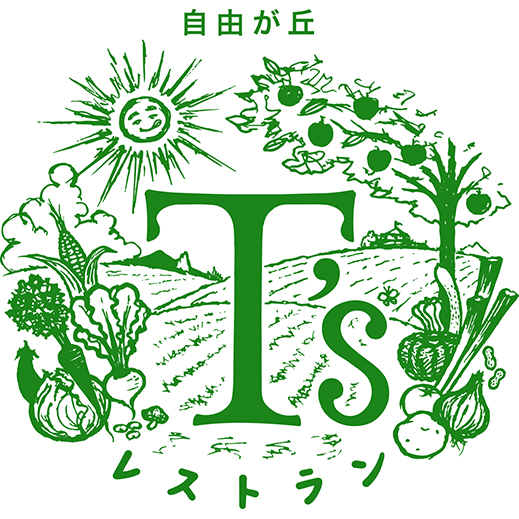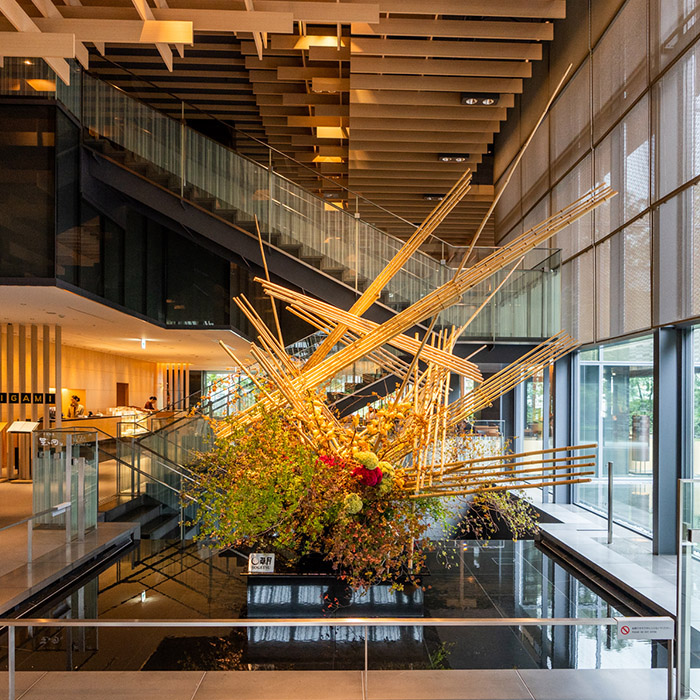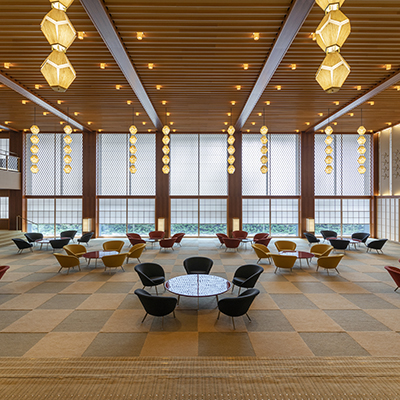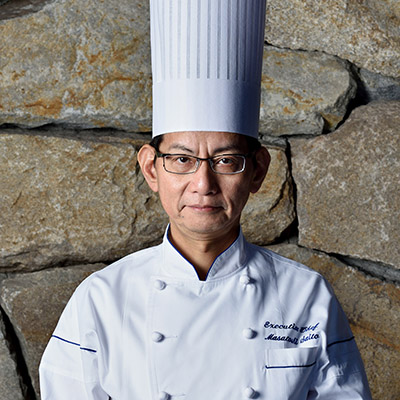Japanese Restaurant Horikawa Restaurant Review
By Patricia Yarrow
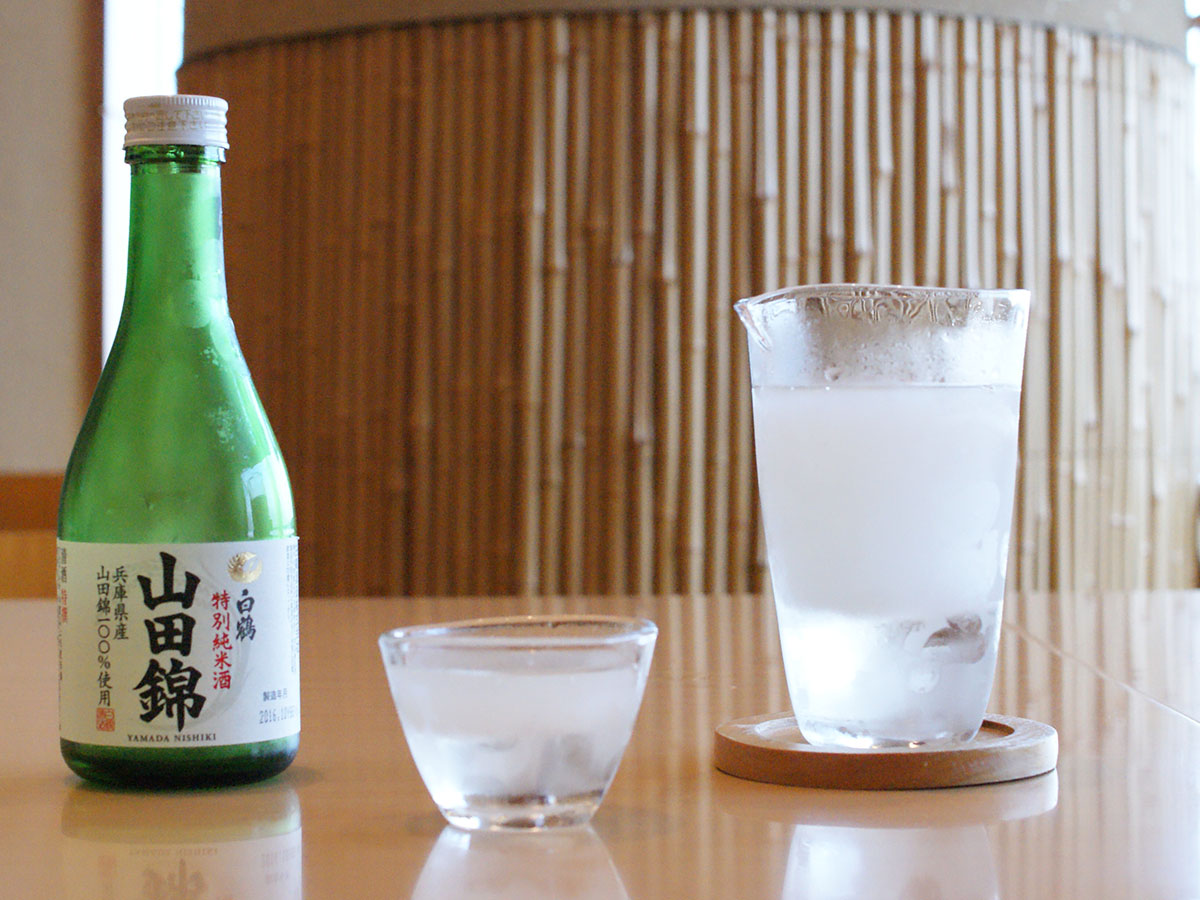 The surprisingly versatile and intriguing Mizoreshu
The surprisingly versatile and intriguing MizoreshuUnder the cheerful eyes of our young assistant, gently attentive lass clad in a light grey-blue patterned kimono neatly matching the light veil of clouds outside, typical of late autumn skies, we anticipated the arrival of the most unusual sake.
Our young lady poured what appeared to be normal clear sake into an impressively large glass pitcher, wherein the liquid transformed into a shimmering sherbet! The secret to this transformation lies in the special technique of gradually lowering the temperature of sake. While sake normally freezes around -7 to -10 C, they slowly, slowly bring the liquid sake down about -15 C and maintain the liquid state. Given a shock while pouring the liquid into the glass, the sake crystallizes and turns into a serbert. This time consuming process results in a meagre release of 20 small bottles per day. In the small clear sake cup, Mizoreshu bubbled and positively radiated chilly promises. If sake were made in the Polar Regions, this might be the happy result.
Tokubetsu junmai (special pure sake) is made from 100% Yamada Nishiki sake rice. Milled carefully to 60%, internal released flavor is usually robust and full-bodied. However, this was lightly lemony and effervescent, a complete shock. Somehow, it was like drinking Antarctica.
Sashimi - fresh off the fish
A wide white platter provided a temporary home for five choice sashimi/freshly sliced uncooked recent sea dwellers, glistening to match the waiting cups of translucent gelled sake.

Left to right: tai - sea bream, hotategai – scallop shellfish, chu toro - semi-fatty tuna, ama ebi - red prawn, and kampachi - amberjack.
To my amazement, each sang a different note with the icy cloud of sake in my cup. The tai and Mizoreshu twittered together delicately. The moist stickiness of the ama ebi quickly washed away and a buttery note emerged with the chilled sake. The succulent fat embedded in the chu toro declared a hasty marriage with the lemony sherbet Mizore. A sliver of green lime rind around the hotate hoisted the sake lemony zing to a return performance upon the crunchy scallop. Nearly translucent kampachi matched tender notes as they melted together and vanished into memory.
Tempura - delicately fried
As the late afternoon shadows lengthened outside, we eased into our second adventure, a simple, rounded plate hosting a structure of simmering tempura so lightly coated each guest star to the plate was clearly visible through its crispy sheath. A miniature cone of daikon - Japanese white radish with a grated ginger topping, tentsuyu - tempura dip, grainy salt and tangy lemon stood by as willing accomplices.
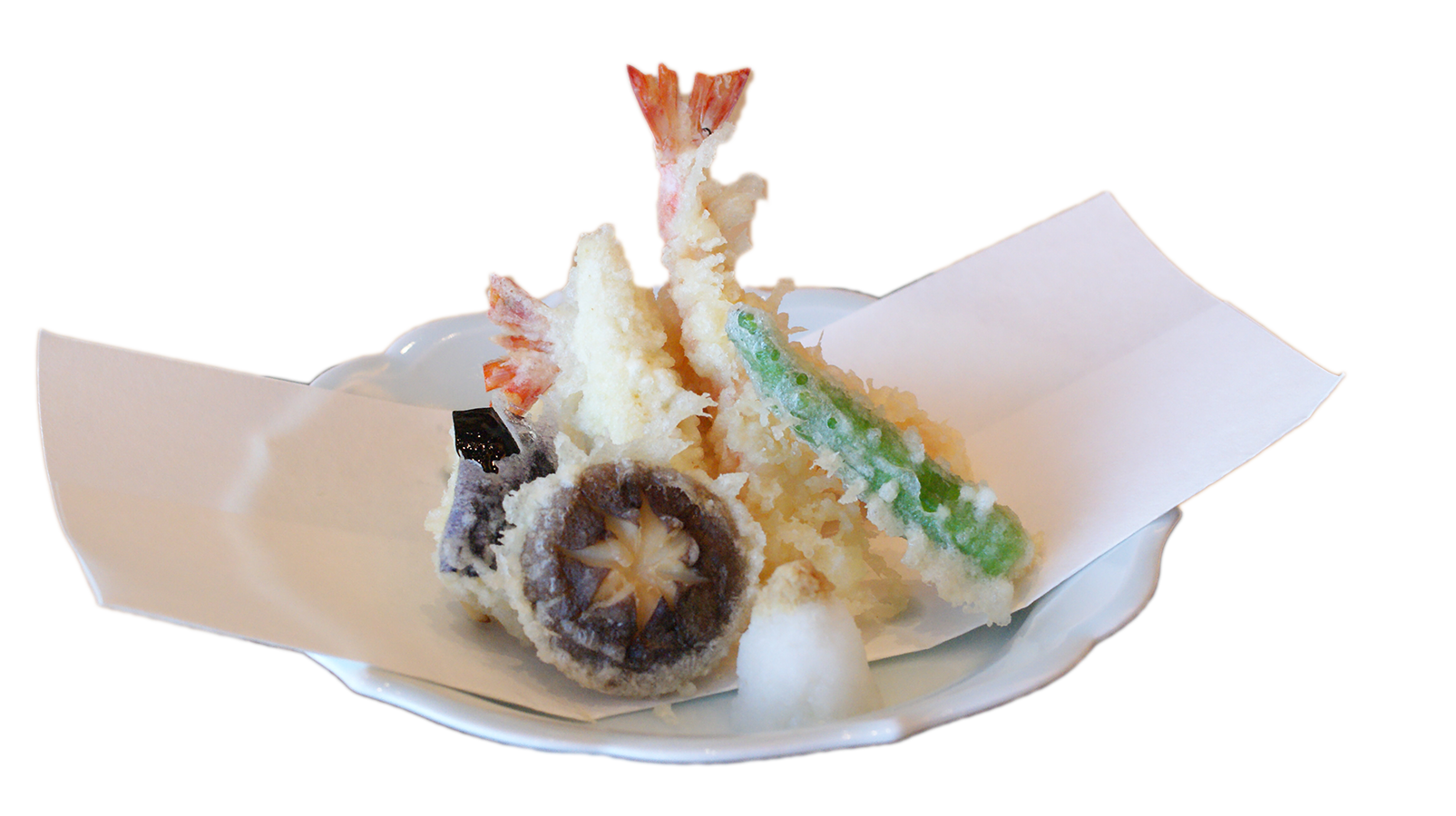
Left to right: Satsuma imo - Satsuma sweet potato, shiitake – shiitake mushroom, kuruma ebi – Japanese imperial prawn, and shishito - green pepper.
The still frosty Mizoreshu perfectly integrated with the light oily crunchiness of the tempura coating, allowing the texture and flavors to emerge unimpeded. A light dipping of the vegetables into the tentsuyu induced a mysterious glamor. Salt and lemon could be added at will. Experimenting, a solo addition of salt overwhelmed the ebi, but with salt and tentsuyu sauce or lemon alone, harmony was restored. It was a close call. A bit of salt alleviated the slight bitterness of the Satsuma sweet potato.
While Mizoreshu in its Popsicle form was extremely light, once melted and approaching room temperature, deeper Nishiki notes blossomed and easily closed ranks with the tempera spiciness of shishito green pepper and woody shiitake mushroom.
Our second sake, from Urakasumi 浦霞 (Misty Bay), readily recognizable from the label of the moon-viewing monk, also paired well with the last of the tempura and the wagyu sukini to come. With a creamy middle tone, it was like bringing a comfortable friend to the party, not overly calling for attention but good have in the mix.
Wagyu Sukini – a light stew and egg
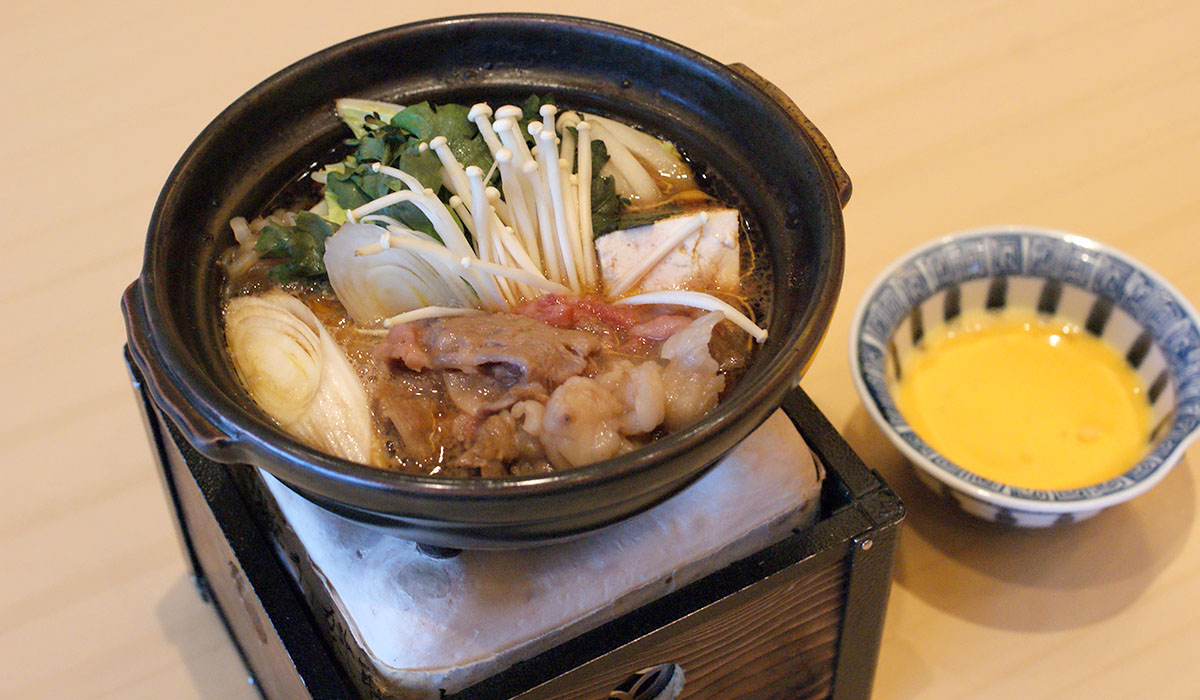 Wagyu sukini completed our culinary journey with substantial fare to welcome the deepening autumn chill. Our marbled wagyu beef tonight originated in Kagoshima. “Sukini” is a melodious portmanteau of “sukiyaki” (thin slices dipped into beaten uncooked egg) and “nikomi” (food gently cooked in a rich stew). The final simmering echoed historic cooking methods with a sturdy bound dark cedar box holding a square heating stone protecting a small heating element concealed inside. A dark ceramic shallow cooking bowl held a tightly arranged collection of slices of meat, tofu, and vegetables. These subdued colors were offset by a bowl of blue and white porcelain occupied by a sunny bright yellow egg mix.
Wagyu sukini completed our culinary journey with substantial fare to welcome the deepening autumn chill. Our marbled wagyu beef tonight originated in Kagoshima. “Sukini” is a melodious portmanteau of “sukiyaki” (thin slices dipped into beaten uncooked egg) and “nikomi” (food gently cooked in a rich stew). The final simmering echoed historic cooking methods with a sturdy bound dark cedar box holding a square heating stone protecting a small heating element concealed inside. A dark ceramic shallow cooking bowl held a tightly arranged collection of slices of meat, tofu, and vegetables. These subdued colors were offset by a bowl of blue and white porcelain occupied by a sunny bright yellow egg mix.Alone, the beef and vegetables were suitably flavorful. Swishing each through the egg mixture cooled them slightly and altered their flavors. The wagyu beef became even more succulent.
The arrival of Ginjo Gokujo Yoshinogawa from the oldest extant sake brewery in Niigata added a refined lightness to counter the weightier fare. A swirl of flavor surprises ensued between straight-from-the-stew pot, or swished through the transformative egg mix, between the refreshing sake.

Tokubetsu Junmai Yamadanishiki
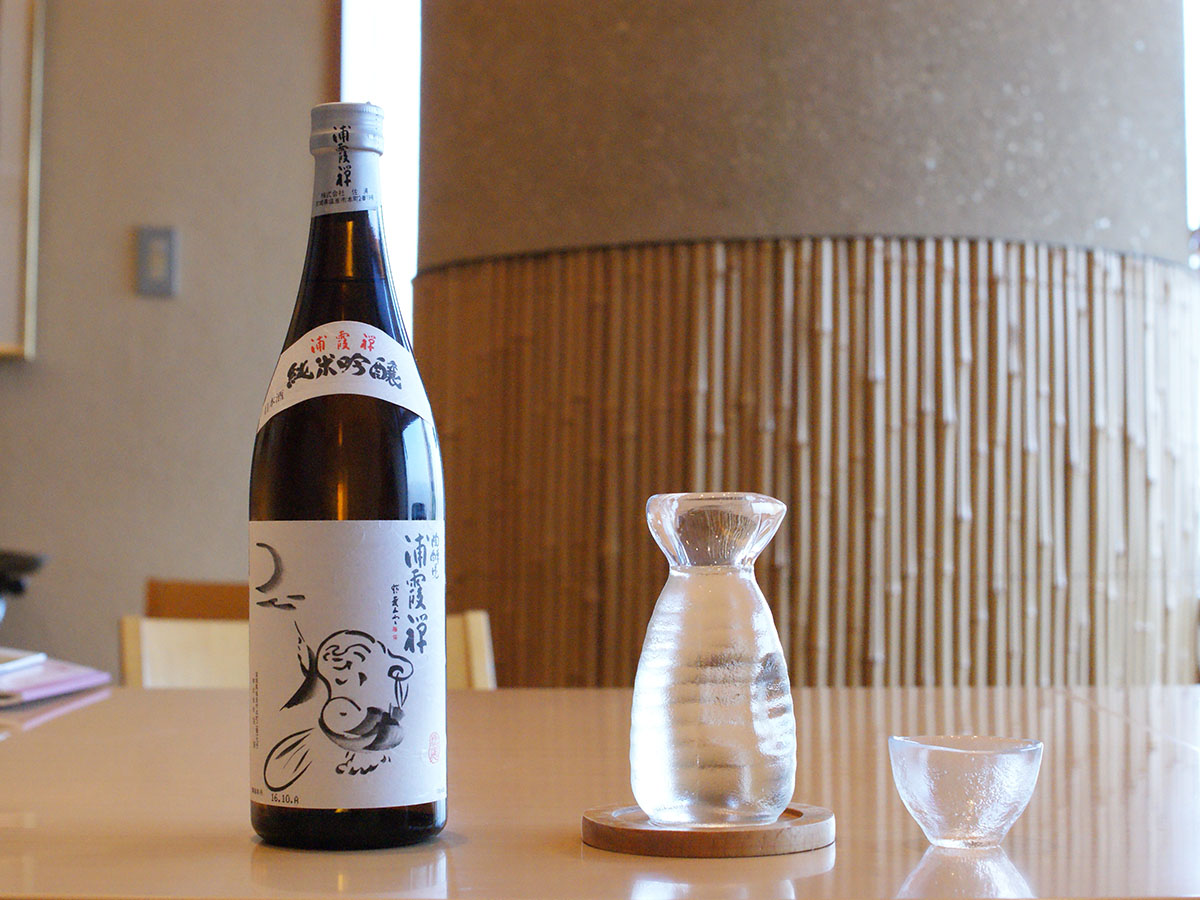
Junmai Ginjo Urakasumi Zen
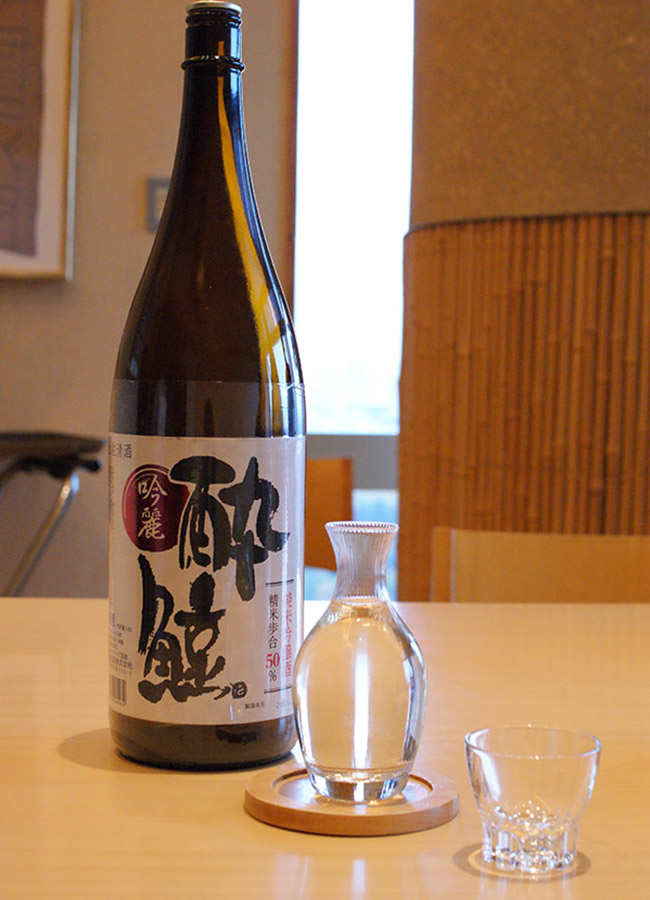
Junmai Ginjo Suigei
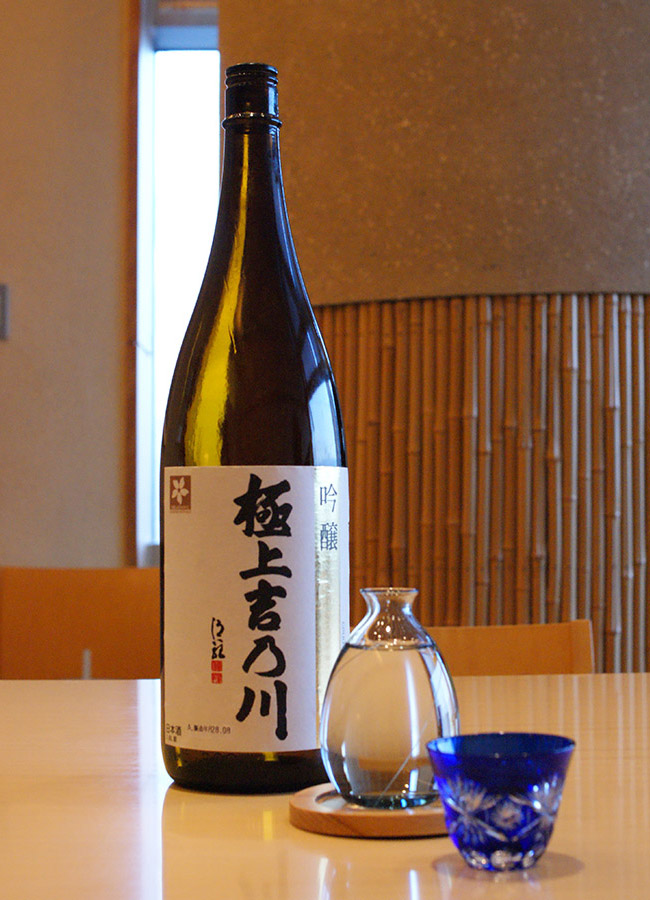
Ginjo Gokujo Yoshinogawa
Cooking in pots on the table is a certain style, and moving between unadorned morsels and egg-altered flavour, further enhanced with Drunken Whale sake, whose acidity added freshness to the finale, composed a closing chorus for our delight. Between the delectable cuisine and well-matched sake, pleasant staff, décor, spectacular city views, and the very welcome non-smoking policy, I departed already looking forward to returning to enjoy the other two Horikawa sushi and teppenyaki establishments of floor 19.
Patricia Yarrow
Patricia Yarrow is a longtime resident of Tokyo. She teaches academic and travel writing and English at Meiji University and Meiji Gakuin University. Along with enjoying photography, writing websites, gym workouts, and researching nihonshu, she is a council member of the Asiatic Society of Japan.
Patricia Yarrow is a longtime resident of Tokyo. She teaches academic and travel writing and English at Meiji University and Meiji Gakuin University. Along with enjoying photography, writing websites, gym workouts, and researching nihonshu, she is a council member of the Asiatic Society of Japan.



